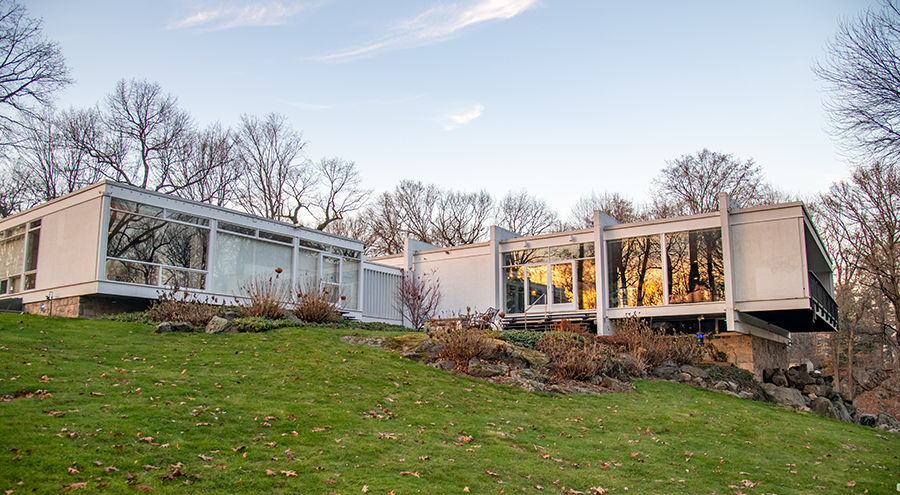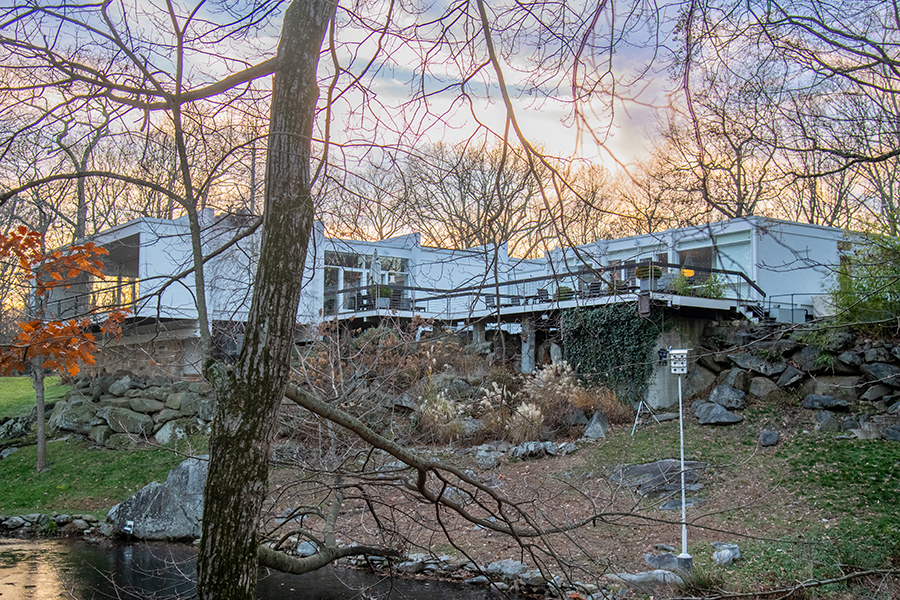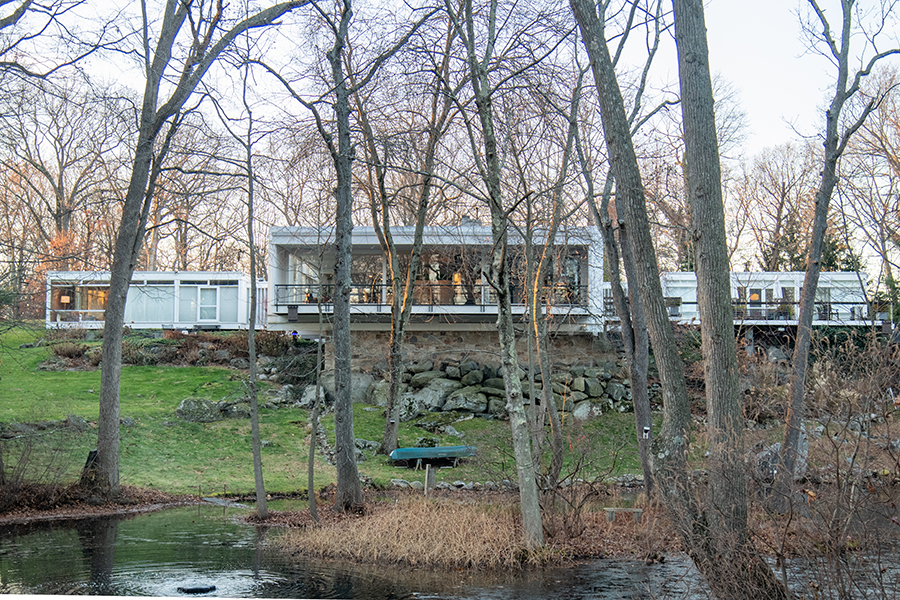House Tour | written by: MARIAN CASTELL, Darien Town Historian | photos by: BAMBI RIEGEL | riegelpictureworks.com

This dramatic Settlers Trail home appears to be floating above the ground, thanks to its cantilevered, single-storied, white-sided rectangular sections filled with tall windows. It is a stunning example of International Revival Style architecture (also often referred to as Mid-Century Modern) and it is remarkable to have it in Darien, marking as it does a seminal time in our architectural history.
Built by Harvard Five architect John M. Johansen in 1955, the home’s strong, horizontal, concrete, glass and steel rectangular sections, stripped of any applied architectural elements and placed at different angles, are telling us World War II is over. They tell of a new world in which the United States is now the most important world power. It is called International Revival Style because it is a continuation of what was being built done in the 1920 – 30s, before the War. This simple, functional style took its new life and leadership in the architectural realm from the construction in New York City (NYC) of the Seagram Building (Mies Van der Rohe) and the MetLife Building (Walter Gropius)—both symbols of America’s new world commercial power and both built in the Fifities.

As Johansen developed the International Revival Style in Darien, Philip Johnson took the lead with it in New Canaan, most notably with his famous glass house which used the same elements. These two architects, plus Landis Gores, Eliot Noyes and Marcel Breuer became famous as the Harvard Five for their ties to Harvard and the great influence they had on local architecture. Breuer was an instructor at the Harvard Graduate School of Design. Gores, Johnson, Noyes and Johansen were students there. Johansen studied with Breuer.
The Harvard Five built 100 houses in New Canaan with four on the National Register of Historic Places. The head of the Harvard architecture program where Johansen studied was Gropius who, long before designing the MetLife Building, founded the Bauhaus School (Construction House), in Germany, in 1919. This was a revolutionary idea of an art school as it was open to all—artists, craftsmen, designers, painters and sculptors. It was established to bring together artistic vision with production and function and was very influential for many years until Hitler’s police closed it down in 1933. Gropius then came to Harvard to teach architecture and is considered one of the groundbreaking masters of modernist architecture.

Johansen was born in 1916. His parents were successful artists in Greenwich Village. During his undergraduate years at Harvard, he played on the school’s soccer team as a striker and earned All-American honors in 1939. After graduating, he earned a Masters of Architecture from the Harvard Graduate School of Design. He became a draftsman for Breuer then joined Skidmore, Ownings and Merrill in NYC before opening his own practice in New Canaan. He also found time to be an adjunct professor at Yale. In addition to the homes he built in Darien, Johansen designed the Embassy in Dublin, Ireland, the Clark University Library, a theater in Oklahoma City, and a large variety, of imaginative very unconventional buildings. He designed for a very long time, and wrote Nanoarchitecture – A New Species of Architecture in 2002. He died on October 26, 2012 at 96 years old but lives on in the magnificent structures he left behind.

